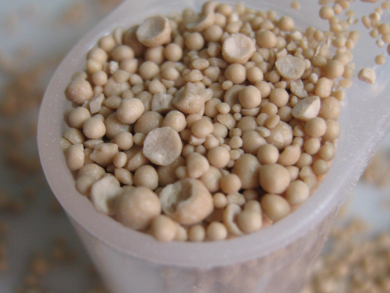Diatoms and glass sponges are organisms that are capable of synthesizing siliceous external skeletons to protect themselves. This biosilicification process enhances the resistance of individual cells to environmental stresses, and is highly desirable in cellular engineering.
Sung Ho Yang and colleagues, Korea National University of Education, Chungbuk, Korea, have developed a bioinspired silicification technique for yeast cells using a synthetic peptide as a catalyst. In the design of the peptide, arginine terminals and cysteine chains are responsible for cell surface adsorption and catalytic activity, respectively, enabling the efficient hydrolysis of tetraethyl orthosilicate into ultrathin (<100 nm) silica shells in imidazole buffers.
Compared to previously explored abiological silification methods, this new approach only requires single step operations, and does not need templates. More importantly, the peptidic catalyst could easily be modified to promoted the formation of other inorganic layers of interest, including titania and calcium carbonate.
- Peptide-catalyzed, bioinspired silicification for single-cell encapsulation in the imidazole-buffered system,
Ji Hun Park, Insung S. Choi, Sung Ho Yang,
Chem. Commun. 2014.
DOI: 10.1039/c4cc08544b




